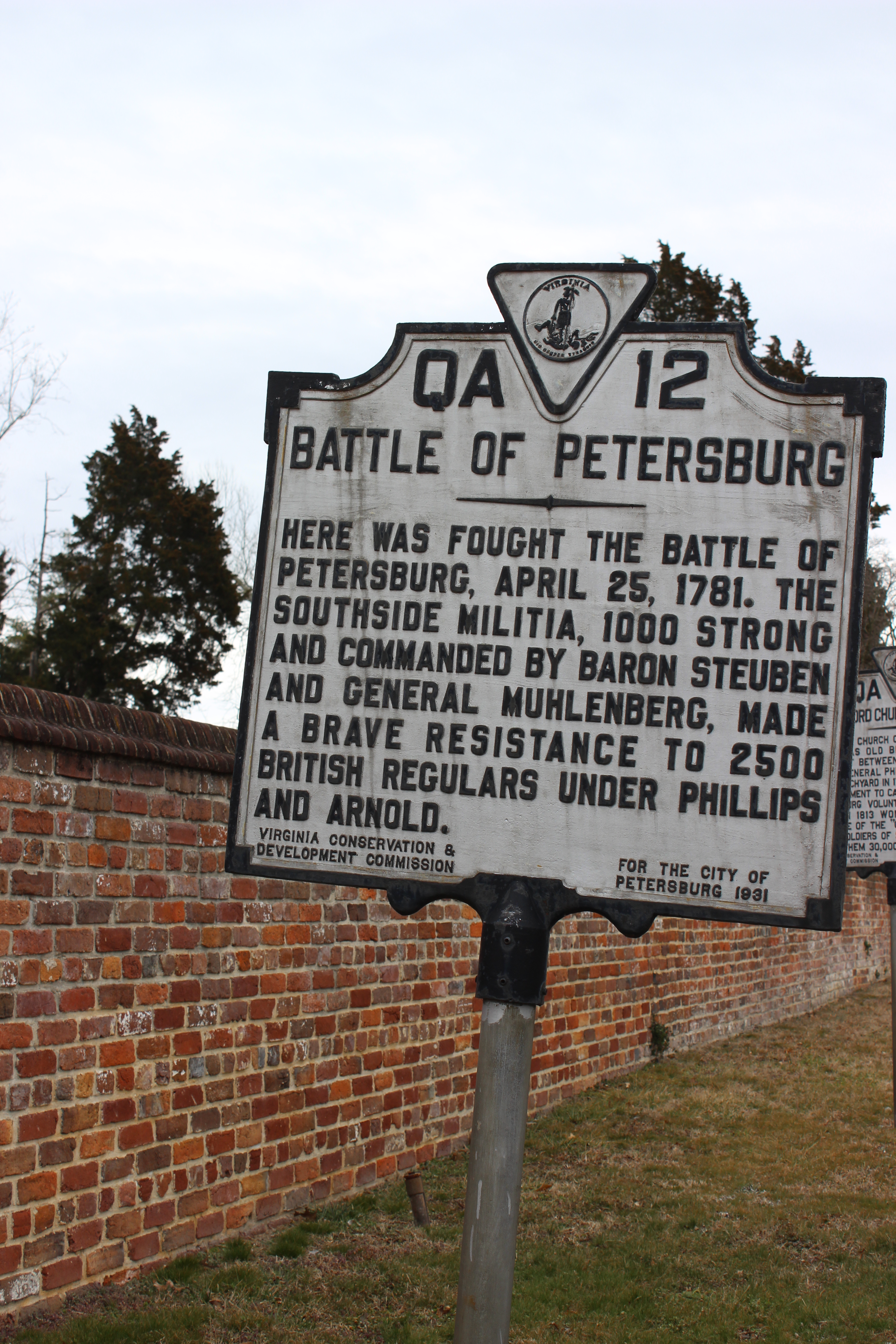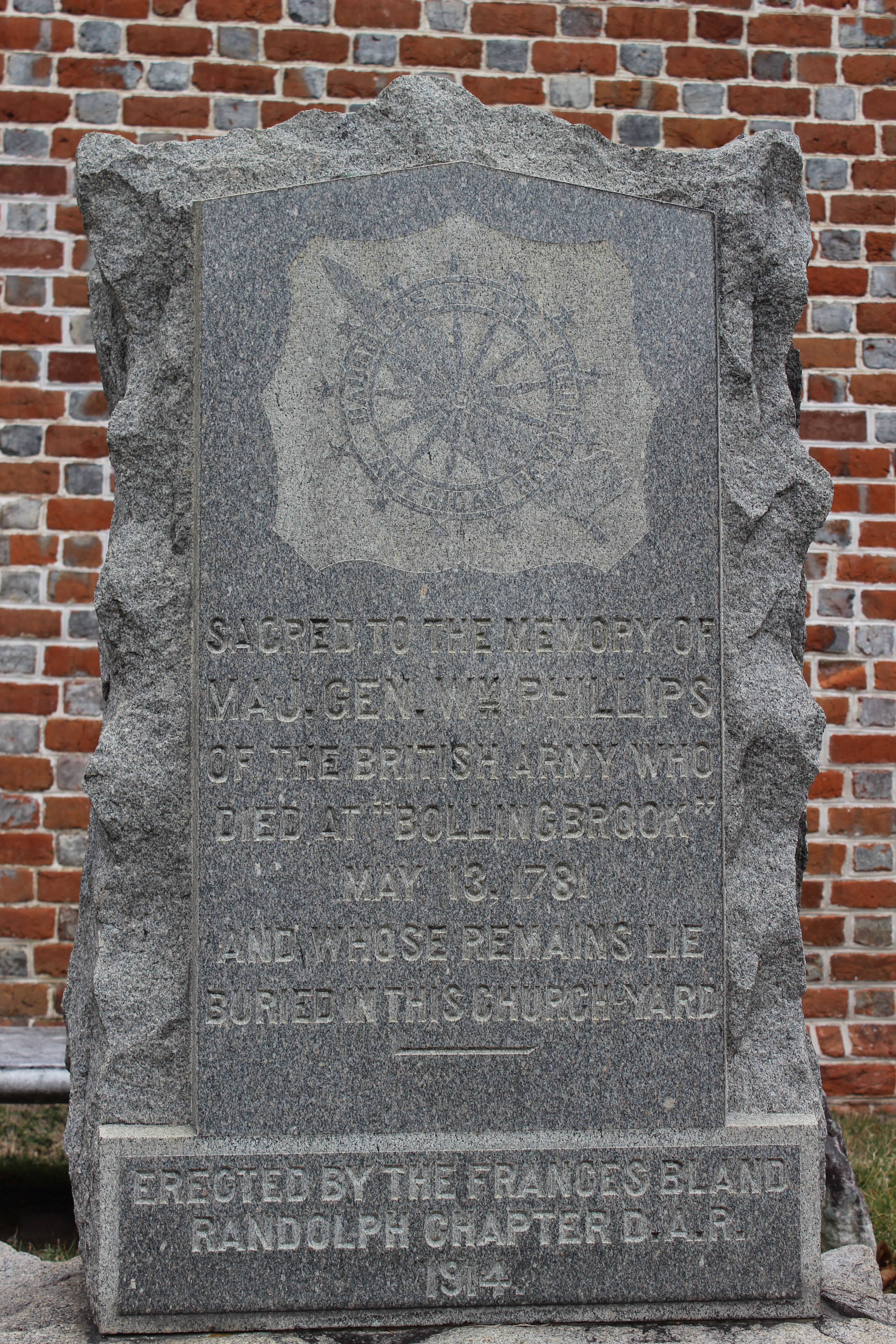Battle of Blandford
On April 25, approximately 2,500 smartly dressed but campaign worn uniformed invaders attacked Virginians defending their homes and hearths around Petersburg, Virginia.
One would suspect that the next few sentences would talk about the latest Union excursion against their Southern counterparts in the nine month siege that broke the back of the Confederacy.
However, one would be wrong.
On that late April day, those soldiers were wearing redcoats and were commanded by Brigadier General William Phillips and Benedict Arnold.
The Virginia militia, numbering 1,000 approximately were commanded by Baron von Steuben.
The British had landed at Hopewell, in all probability near where U.S. Grant situated his headquarters 84-years later.

Bent on raiding the countryside to limit supplies for American General Nathanael Greene in the Carolinas the British force defeated the militia at the Battle of Blandford on April 25th. The militia provided a good showing, defending the rolling terrain and slowly retreating to avoid the characteristic British tactic of flanking their antagonists.
Although not a major engagement, the action at Blandford showed the resiliency of Virginia militia and their spirited defense had bought time for the Americans.
The British pursued the militia to Manchester, opposite Richmond, Virginia by April 29th.
But, when the British forces arrived on the banks of the James River facing the Virginia capital, they were too late. The Marquis de Lafayette had rushed south and taken control of the city.

With orders to return to Petersburg, Phillips retreated away from Richmond after causing damage to the local countryside and burning tobacco warehouses laden with that Virginia commodity.
de Lafayette greeted the British arrival back in Petersburg by audaciously firing a few artillery rounds at the British columns.
For Phillips though, that was the least of his concerns, as the 50-year old British general officer contracted typhoid fever and died on May 13th. Albeit, the shells did provide a nuisance to the dying general who supposedly remarked, “won’t that boy [Layafette] let me die in peace?”

His remains lay in Blandford Cemetery today.
Somewhere.
Like the Battle of Blandford itself which is covered by the actions of the American Civil War and modern encroachment, Phillips remains have been covered up in Blandford Cemetery.
A small marker near the church itself reminds visitors that a British general remains rest in the immediate area.
Layers of military history.